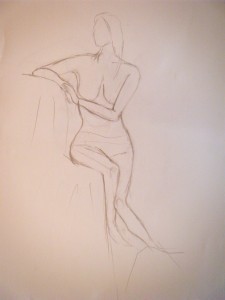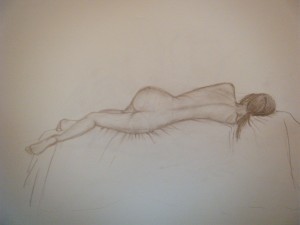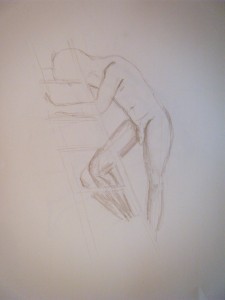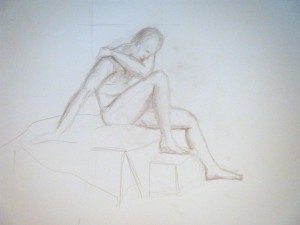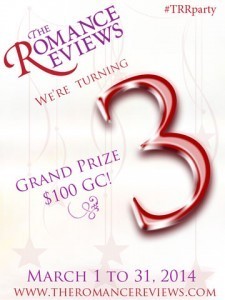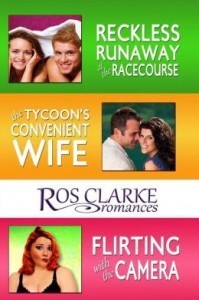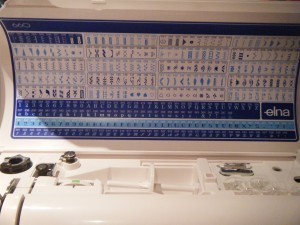Ros Clarke's Blog, page 8
March 7, 2014
What’s occurring*
New places to buy!
I have been wrestling with the arcane Google Play interface and finally worked out how to get my books up for sale there. At the moment, you can buy the Oil Tycoon and Her Sexy Sheikh, All I Want for Christmas, Table for One, The Tycoon’s Convenient Wife, and Ros Clarke Romances. I’ll be putting the rest up in the next few weeks.
New books to buy!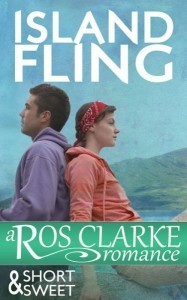
Island Fling, a short story set mostly on a remote Scottish island, is now available to pre-order at Barnes and Noble. It will be on sale there and all the normal places on March 24th.
An Unsuitable Husband, the sexy French footballer book, will be on sale in April. I’ve had my first peek at the cover and whew, it is HOT.
New projects on the go
I’m revising the sheikh story to submit later this month and then I shall be starting something new, hooray! I think it’s going to be a boss/secretary story. Female boss, male PA. It’s going to be a lot of fun. Kind of like an old school Presents, with a little bit of role-reversal and trope subversion, which is my favourite kind of book to write.
New reading challenge
The Vacuous Minx decided that March was the month for reading Big Fat Books and invited others to join her. I’m reading Wolf Hall which has been sitting on my bookshelf for years, while I guiltily avoided catching its eye. But I have stumped up for a kindle version and jumped in. It is wonderful. I think I will be finished long before the end of March. Have you got a Big Fat Book you’d like to read and need a little extra motivation? Why not join us?
*The BBC are getting rid of BBC3. That is not what this post is about.
February 28, 2014
Lifedrawing weeks 1-3
It’s been longer than 3 weeks, really but what with classes cancelled, halfterm and me missing a week, I’ve actually only just been to my third session. Anyway, I want to keep a record so I can look back and hopefully see what progress I have or haven’t been making.
Week 1, 1 hour
Same pose as above, second attempt.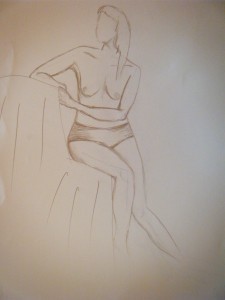
February 27, 2014
Giveaways galore!
I’m running a Library Thing giveaway for the Ros Clarke Romances anthology. I don’t think you can link directly to individual giveaways (Can you? Anyone know?) but if you go here and search, you’ll find it. As things stand you have a very good chance of winning! Also, it says that a review is required which, while reviews are always lovely and I’d be very grateful if you did, I’m never gonna check. So don’t let that stop you!
Also, I’m giving away a copy of Flirting With The Camera as part of The Romance Reviews anniversary party. I’ll let you know when my giveaway goes live over there, but there are a ton of other authors involved and a lot of great prizes to check out.
February 26, 2014
In which I shall be laying down the rules and expecting the universe to comply
So. There has been a lot of excited discussion on twitter and on Dear Author lately about various elements much-cherished in the romance genre, in particular the requirement for an ‘emotionally satisfying and optimistic ending.’ In other words, they have to get together by the end and the reader has to be convinced that they are happy. The common shorthand for this ending is Happy Ever After (HEA). It can be signalled formally by an engagement, a marriage, and all-too-frequently, or by an epilogue set some time in the future when our happy couple have produced a quiverful of babies. Bonus points for this epilogue if infertility was one of the plot points in the book. It can be signalled more informally in any number of ways that are appropriate and specific to the couple involved. The major sources of conflict in the plot, both external and internal, need to be resolved so that the reader can be confident there are no obstacles to the hero and heroine enjoying a blissful future together. Or at least, years of arguing whose turn it is to put the rubbish out.
Today we have two questions which I will settle once and for all:
(a) must every romance novel have an HEA and, if not, what are the limits of acceptable alternatives;
(b) is there such a thing as a series of romances in which only the final book has an HEA?
I will deal with (a) first.
No, not every romance novel must have an HEA. It’s not always appropriate to the characters and the story, and not necessary for the ending to be emotionally satisfying and optimistic.
For example, consider what an emotionally satisfying and optimistic ending for a romance featuring 19 year olds is likely to look like. The couple should have overcome all the conflicts in the book, external and internal. But readers know that at that time of life things often change quickly. External circumstances and internal emotions are more volatile when you’re still at college. These kids can be together in an emotionally satisfying way that is optimistic for their future, but not be rushing down to the jewellery shop to put a ring on it. They may not even want to use the ‘l’ word, though probably they are feeling it. They are likely to freak out if the heroine got pregnant. They might still be considering career choices that involved periods of separation. They certainly still have a lot of growing up to do. By the end of the book they should have achieved what they need now, and that should offer potential for the future, but it does not need to be a settled commitment and if the author suggests that it is, they will need to work extremely hard to make that seem plausible. (I know it’s not a romance and there were other reasons for doing it but the Harry Potter epilogue is a good example of when this doesn’t work.)
These sort of Happy For Now (HFN) endings aren’t just for the young’uns. What about a story that takes place over a very short period of time (no matter how long the book is)? Or a romantic suspense where the couple meet at a time of high pressure and maybe in a life-threatening situation? I’d want to see endings for these couples that are optimistic for the future, but realistic about the fact that they will still have a certain amount of getting to know each other and getting used to each other in more normal circumstances. There has to be a desire to try and make it work, but it would feel wrong to have them rushing to an altar (real or metaphorical). If they were my friends I would be advising caution and patience, no matter how optimistic and pleased for them I was. They might be saying ‘I love you’s and hoping it will last, but until that love is tested against the everyday mundanity of life for a while, I don’t think they should be conceiving triplets and putting down joint deposits on a house.
So here’s what I require at the end of a romance novel:
Couple are together
They are happier together than they were apart
They are optimistic that this will continue
I am optimistic that they will continue to make each other happy for the foreseeable future
There is nothing in the plot left unresolved that will be an obstacle to their future happiness
Here’s what is optional:
I love you to be spoken
I love you to be thought
Rings, weddings, babies
They believe utterly that nothing short of death will separate them
I believe utterly that nothing short of death will separate them
Things that were not in obstacles in the plot are also resolved (INFERTILITY, I’M LOOKING AT YOU.)
Side note: if you are the sort of reader who likes to imagine that all HFN’s turn out to be HEA’s, that’s great! I don’t think authors should leave anything unresolved that would spoil this for you. But that’s up to you as a reader. I think HEA’s demand to be read that way, while HFN’s allow more ambiguity when imagining the future beyond the book.
Now onto (b). Is there such a thing as a series of romances in which only the final book has an HEA?
No.
No, no, no, no, no.
Here’s what you can have:
A serial romance, which is one book, chopped up and sold in short sections for the purposes of extracting more money out of readers. The serial episodes will not have HEA/HFN but they will be clearly labelled as such and readers will know that the resolution only happens in the final book.
A series of connected romances, each featuring a different central couple. I think that all HEA couples must remain together throughout the series. I would be okay with HFN couples splitting up, but I can see why some readers would object to this.
A series of books of some other genre with a romantic subplot that has a series arc. Mystery series work well with this set up. The romantic subplot does not have to reach its resolution until the final book.
A series of books about a relationship of which one or more meet the definition of a romance but many do not. These are not books I want to read when I am reading romance. For me they are a breach of trust and a betrayal of the genre. If you tell me that these books are romances but they do not fulfil the promise that a romance novel makes, I will be cross and upset, and I will feel let down by the book. The ending is such a core part of the definition of a romance, and for me it is the determining factor in the experience of reading romance. The confidence I can have in the ending is what allows me to enjoy the journey. The certainty of resolution gives me the freedom to experience the conflict and separation without fear.
To me it is very simple: one romance novel, one HEA/HFN. Everyone, please to be taking note of this and acting accordingly. Thank you.
February 13, 2014
Not-a-box-set Valentine’s Day bargain!
Because something about the fake ebook box set just winds me up. But my anthology is now available in digital format as well as print. Here’s the blurb:
LUKE & FLISS
Teasing, testing, tempting Fliss Merrick is the worst sort of distraction for calm, orderly racehorse trainer Luke Caldecott. Before he knows quite what’s happened, she’s in his home and in his life. Now all he has to do is work out how to hold on to her.
GUY & EMILY
Fifteen years ago, Emily Standish and Guy Munro were friends. Until she fell in love with him and he married someone else. Now Guy needs an enormous favour from his old friend and Emily has a chance to see if love can strike twice.
TOM & HATTIE
Hattie Bell is beautiful, brilliant and bigger than your average plus-sized model. Sparks in the studio of top fashion photographer Tom Metcalfe set off a sizzlingly sexy affair that has both of them revealing more than they bargained for.
Three fun, flirty contemporary romance novellas, sweet and sexy, now bundled together in one digital edition.
It’s normally going to retail at $5.99 or £3.76 for the ebook, but because it’s Valentine’s Day tomorrow and I love you, I’m setting it at just 99c (Amazon US) or 77p (Amazon UK) until Sunday. Cheap as chips!
Even if you already own one of the books, this is the cheapest way to get the other two.
In fact, even if you already own two of the books, this is the cheapest way to get the third. So go forth and grab yourself a total bargain!
The bargain price is only available at Amazon (sorry) but it is DRM-free and I hereby give you all permission to do whatever you need to do to read it in the format of your choice (I recommend Calibre for converting the file).
You might also like to know that B&N are insisting on selling Twelve Days for free. I’m not sure why, but if you haven’t picked up a copy yet, you might want to do so before it reverts to the correct price.
Who am I?
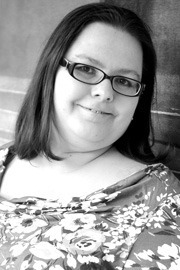 Ros, in black and white, trying not to lean against the picture on the wall behind her?
Ros, in black and white, trying not to lean against the picture on the wall behind her?
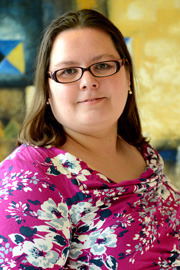 Ros, in colour, looking serious, as if this matters?
Ros, in colour, looking serious, as if this matters?
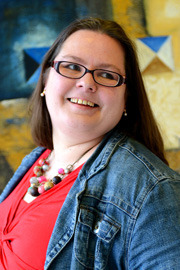 Ros, thinking that if she turns her head any further, something is going to crack?
Ros, thinking that if she turns her head any further, something is going to crack?
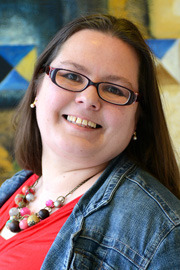 Ros, smiling because this is going to be over soon?
Ros, smiling because this is going to be over soon?
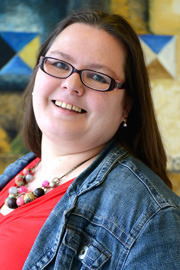 Ros, sighing, because apparently it’s not over quite yet?
Ros, sighing, because apparently it’s not over quite yet?
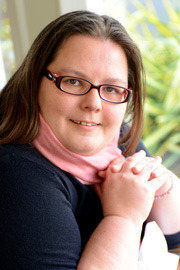 Ros, leaning her elbows on the table, and looking earnestly into your eyes?
Ros, leaning her elbows on the table, and looking earnestly into your eyes?
So which one should I pick? Obviously, I am looking for the one that makes you think you immediately want to rush out and buy all my books. Or, failing that, at least want to follow me on twitter.
February 11, 2014
What I’ve been reading (with bonus algebra!)
It’s been a while since I’ve done one of these and so the answer is quite a lot. I’ll spare you some of the more mediocre reads.
Here’s the summary:
A Study in Seduction by Nina Rowan
I had been waiting to read this since it came out last year because, hello, mathematician heroine, but boo, geographical restrictions. I am not sure it was worth the wait. I didn’t warm to either of the main characters much and I didn’t really believe that Lydia was a mathematician. We’re told that she is, a lot. And she knows lots of formulae and things, but she doesn’t really think like a mathematician. About halfway through, she sets a maths problem for the hero. Which I then had to solve before I could read any further and since my maths is pretty rusty it took a while. I think I have solved it but I get a different answer from the heroine (but I think her answer must be wrong, unless she’s dealing with complex variables). Finally I have solved it! Answer below. I am happy that this took me considerably less than the two weeks which Lydia allowed Alex. Also, authors, please put the solutions in the back of the book! Or at least, on your blog. Some of us care about these things.
The One She Was Warned About by Shoma Narayanan
Sweet, undemanding, a little bit predictable India-set M&B romance. Narayanan’s style is different from other books in the Modern Tempted line, but I like it.
Girl with the Cat Tattoo by Theresa Weir and Geek with the Cat Tattoo by Theresa Weir
I was never planning to read a book narrated by a cat. And I was relieved to discover that neither this nor the sequel are entirely from the cat’s POV. It was cute. I think I liked Geek better than Girl. I’m happy to have read both but I would quite like pet romances not to become a Thing. (F, don’t read Geek. Someone is mean to the cat. I think you’re safe with Girl, if you want to try it.)
A Night of Southern Comfort by Robin Covington
Fun category romance with a side element of suspense.
The Italian’s Suitable Wife by Lucy Monroe
The Greek’s Innocent Virgin by Lucy Monroe
The Sheikh’s Bartered Bride by Lucy Monroe
Um, so M&B are digitising some of Monroe’s backlist and I am powerless to resist. The Sheikh’s Bartered Bride is very like her more recent Prince of Secrets. The Greek’s Innocent Virgin is a not-completely-secret baby book. And The Italian’s Suitable Wife has a hero in a wheelchair for much of the book. Sometimes I thought that was handled pretty well – there isn’t much unnecessary detail about how he manages to do things in his chair, and he’s very much still the alpha male, in control of everything, whether he’s on his hospital bed (he starts off in a coma) or in the chair. And I liked very much that at the beginning of the marriage, they clearly have a sexual relationship which is satisfying for her but does not involve penetrative sex. Because she is a M&B heroine, she is a virgin at the start, and it’s clear that the hero considers himself to have taken her virginity even though there has been no PIV sex. However, the next scene has the hero beating himself up about not being ‘whole’ and not being able to make love ‘completely’. His impotence fuels the major conflict in the second half of the book and I was not impressed with the way he dealt with it at all, and the consequence it had for his wife. So, um, I guess I’m not recommending this one. Which is a shame because it has some great scenes in it too.
Love and other Scandals by Caroline Linden
Bought and read on the strength of MFOB’s review. Light on the historical accuracy, and with an irritating motif of an erotic book for women called Fifty… But a nice courtship and characters who I wanted to get their happy ending.
Promise of Happiness by Betty Neels, Damsel in Green by Betty Neels, Saturday’s Child by Betty Neels, Enchanting Samantha by Betty Neels
Some of the best Neels I’ve read, thanks to some recs from Sunita and others.
The Lady and the Laird by Nicola Cornick
Disappointing. I’ve read and enjoyed other books by Cornick much more than this.
The Prince of Pleasure by Sandra Marton
Didn’t like the set up for this, didn’t believe in the plot, didn’t care enough for the characters to let the rest go. Not her best.
Reforming the Playboy by Inara Scott
Didn’t love the set up for this either – one of those tricksy wills that I don’t really believe in. But after that it was great. Two artists, former lovers, lots of creative tension.
Mr Right There All Along by Jackie Braun
Oh, this was another great rec from someone. Sweet, funny and just lovely.
The Chocolate Temptation by Laura Florand
I do love Florand’s voice and style, so as I was reading this I was swept along with it and sighed happily at the end. But I admit even while I was reading that I had to find a creative solution to the sexual harassment at work issue, and I had some doubts about the heroine’s backstory. And afterwards, reading Brie’s comments here and Willaful’s here, I’m not sure I’ll read it again, or at least not with such pleasure.
The Sheikh’s Bride by Sophie Weston
An old M&B but a great one. Not sure if it’s available in ebook, but you may be able to find a second hand copy.
So, that’s me. What have you been reading?
*The problem is this: If a+b+c=6, a^2+b^2+c^2=8, and a^3+b^3+c^3=5, what is a^4+b^4+c^4?
Here’s my solution:
(a+b+c)^2 = a^2+b^2+c^2+2ab+2ac+2bc = 36
(a+b+c)^3 = a^3+b^3+c^3 + 3ab^2 + 3ac^2 + 3ba^2 + 3ca^2 + 3bc^2 + 3cb^2 + 6abc = 216
= 5 + 3a(b^2 + c^2) + 3b (a^2 + c^2) + 3c(a^2 + b^2) + 6abc
= 5 + 3a (8 – a^2) + 3b (8 – b^2) + 3c (8 – c^2) + 6abc
= 5 + 24a – 3a^3 + 24b – 3b^3 + 24c – 3c^3 + 6abc
= 5 + 24(a+b+c) -3(a^3 + b^3 + c^3) + 6abc
= 5 + 24×6 – 3×5 + 6abc
= 134 + 6abc
So 6abc = 216-134 = 82
abc = 82/6
(a+b+c)^4 = a^4 + b^4 + c^4 + 4ab^3 + 4ac^3 + 4bc^3 + 4ba^3 + 4ca^3 + 4cb^3 + 6a^2b^2 + 6a^2c^2 + 6b^2c^2 + 12(abc^2 + ab^2c + a^2bc) = 1296
If a^4 + b^4 + c^4 = n, then
n + 4a(b^3 + c^3) + 4b (a^3 + c^3) + 4c(a^3 + b^3) + 3a^2(b^2 + c^2) + 3b^2(a^2 + c^2) + 3c^2 (a^2 + b^2) + 12abc(a+b+c) = 1296
n + 4a (5-a^3) + 4b (5-b^3) + 4c (5-c^3) + 3a^2(8-a^2) + 3b^2 (8-b^2) + 3c^2 (8-c^2) + (12 x82/6 x 6) = 1296
n + 20a -4a^4 + 20b – 4b^4 + 20c – 4c^4 +24a^2 – 3a^4 + 24b^2 – 3b^4 + 24c^2 – 3c^4 + 984 = 1296
n + 20 (a+b+c) – 4(a^4 + b^4 + c^4) + 24(a^2 + b^2 + c^2) – 3(a^4 + b^4 + c^4) + 984 = 1296
n + 20×6 -4n + 24×8 -3n +984 = 1296
-6n = 0
n = 0
January 17, 2014
Romance and religion
Even MORE people are talking about it, yay!
Here’s Jane Lee Blair who set up a tumblr and made this her first post: why she, as a Reformed Christian, doesn’t read inspirational romance. She makes lots of good points: the cheesy portrayal of Christian life, the problem of the conversion narrative, that wisdom and insight into relationships aren’t limited to Christian writers.
Authors Emma Barry and Genevieve Turner are kicking off a series of posts on the subject with a discussion of why romances so rarely feature religion. Aside from the possible marketing concerns of publishers, Emma suggests that the conversion narrative is similar – and maybe too similar – to a romance narrative. I think this fits in with my suggestion that a conversion narrative provides another climax in a romance novel which can overshadow the romantic climax.
In the comments to that post, Laura Vivanco linked to this article in JPRS by Catherine Roach. The abstract for the article reads:
The story of romance is the most powerful narrative in Western art and culture, sharing roots with Christianity and functioning as a mythic story about the meaning and purpose of life, particularly in regards to the HEA ending of redemption and wholeness. Contemporary romance novels are popular because this religious nature of the romance narrative allows them to do deep work for the (mostly) women who read them, engaging readers in a reparation fantasy of healing in regards to male-female relations. Romance novels help women readers deal with a paradoxical relationship toward men within a culture still marked by patriarchy and threats of violence.
I’m really excited that these discussions are happening and I hope they will result in more books which feature people of faith.
January 15, 2014
Self-publishing survey: what it does and doesn’t tell us
Author Beverley Kendall set out to dispel the myth that only a handful of authors were doing well self-publishing – those making millions of dollars a year or those being offered substantial deals with traditional publishing houses. She ended up with a survey of 822 self-publishing authors and a ton of data, which she has compiled into a fascinating report which you can now read on her blog. If you’re an author who self-publishes or is thinking of self-publishing it’s well worth your while reading it. If you’re interested to know why so many authors are starting to self-publish some or all of their books, you’ll get a good understanding of that, too.
One of the headline stats is that over 200 authors who took part in the survey earn enough from their self-publishing to have quit their day jobs. That’s pretty awesome and it certainly proves her initial point. The range of income is also interesting, because it’s not all or nothing. There are authors in every band between $0-$10,000 and $500,000+. Some people are making a reasonable living, some are making a substantial supplementary income, some are pulling in a lot more than they could ever have dreamed of. Nearly half the respondents earned over $10,000 from self-publishing in 2013. If you simply want to be able to say, ‘There are hundreds of self-published authors earning very good amounts of money’, this survey has given you the evidence you need.
However, before we get too carried away and try to extrapolate from the survey to making more general statements, I do want to point out a couple of cautions.
First: this is a self-selecting sample.
One of the most important foundations of statistical analysis is the random sample. You can get surprisingly accurate results from relatively small samples, provided those samples are taken randomly. By contrast, if there is a bias in your sampling method, then it doesn’t matter how large your sample is, it will not be representative. 822 authors responded to Kendall’s survey, which is a good number. But there is absolutely no way of knowing how representative they are of the whole group of self-publishers. There may be geographical bias (are US authors over-represented, for instance?), language bias (how many, if any, respondents were publishing in a language other than English), digital bias (there are still some people doing print self-publishing). Almost certainly, there is survivorship bias.*
There is one form of bias that we can see from the survey results themselves, which is genre bias [p6]. I did wonder whether it would be possible to use the data from this question to weight some of the rest of the analysis. That could be useful with the genres which are best represented, but for the smallest genres, the actual numbers are too tiny to make it a significant sample. For example, 1% of the respondents write children’s fiction. That’s about eight authors. I don’t think you can conclude much of anything about self-publishing children’s fiction on the basis of this survey. Anyway, Kendall rightly points out that there is a large representation of romance authors, but she adds, “Having said that, I also believe that the percentages represented in the pie chart below is a reflection of what is selling, especially when it comes to digital books.” I have no way of knowing if that’s true or not, except in the very broadest terms, that romance sells more than any other genres. Maybe that’s all she meant to imply.
[Side note: I actually wonder whether there could be some useful data to be mined by extracting the results for the largest genres represented and treating that separately. What if the romance results were considered, for instance? Or even the different romance subgenres? I do realise that was well beyond Kendall's goals and it's not meant as a criticism of her report, just something I'd be curious about.]
Given the nature of the sample and its potential biases, I do not think it is possible to draw any statistical conclusions about self-publishing as a whole on the basis of this survey. I do think it is useful for identifying several other things, in a non-quantitative manner. But it cannot be used (and it should be said that Kendall does not do this) to calculate average self-publishing income or likely self-publishing income. It is not, sadly, proof that the oft-quoted, never-proven saying that the average self-published author makes $500 is not true. We don’t know, and for a lot of very good reasons, we probably never will (see below for why this doesn’t actually matter all that much).
Second: the survey does not compare self-publishing with traditional publishing.
Or at least not directly. What it does do, a little bit, is compare the earnings from various kinds of publishing (traditional, digital-first, self) for hybrid authors. It does NOT compare the income of solely trad-published authors with digital-first authors or with self-published authors. That is a different thing. For hybrid authors, self-publishing can have an effect on income from non-self-published books, just as their traditionally published books can have an impact on their sales of self-published books. You can see this in figure 3, where the respondents are divided according to their entry point into publishing and it seems clear that hybrid authors who began with traditional publishing do, in general, have higher incomes from their self-publishing than those who started with either digital-first or self-publishing. I actually think this insight into the value of being a hybrid author is fascinating.
But there is no data in the survey about solely trad-published authors and therefore no conclusions can be drawn about trad vs. self-publishing. To be clear, this is NOT a criticism of the survey. It wasn’t intended to do that and if that’s what you’re interested in, you’ll have to do your own survey.
What can we learn from the survey: the habits of high-income authors
So, if we can’t draw quantitative statistical conclusions from the data, and we can’t use it to compare self and trad-publishing earnings, what can we say? I think what we can do is talk about the ‘habits of high-income authors’. More precisely, the habits of the high-income authors who participated in this survey. These are more likely to be true of high-income romance authors than, say, high-income children’s authors because of the genre bias in the sample. They may only be true of the group of ‘high-income authors who have 3 degrees of separation from Beverley Kendall’ or ‘high-income authors who have time to procrastinate by filling in online surveys about their income’ (okay, that’s all authors). The reason I’m calling these habits is because it’s very difficult to be certain about causality – for instance, does spending money on a professional cover generate sales, or is it that higher earners have more spare money to spend on professional covers? The data from this survey doesn’t help us answer that.
The habits of the high-income authors in the survey are:
1. Using professional covers and professional editing
2. Writing books in a series
3. Making a book in a series free
4. Having a sizeable backlist
5. Pricing at $3.99 or $4.99
6. Having self-published for 4-6 years
7. Being traditionally published first
These things don’t necessarily cause authors to earn more (and not all of them are possible to control), but the authors who earn more tend to do those things.
Kendall has done an amazing job in collecting and analysing a lot of data and I think a lot of authors will be as grateful to her for that as I am. There’s much more detail in her report and I encourage you to read it carefully and work out for yourself what you can learn and apply to your own publishing career. And if you are a reader, then do take her reader survey here.
Why doesn’t average author income matter?
Because there isn’t an average author.
If you were thinking of going into, say, teaching, you could look at the average teacher’s income and it would give you a good idea of what you were likely to earn. That’s because teachers are all paid much the same amount. You’d know that if you were promoted to headteacher, or perhaps if you moved to a private school, or whatever, you’d earn more. But there’s a fairly limited range of salaries within which the vast majority of teacher’s incomes fall.
That is not how it works with writing. Some people are J.K.Rowling and some are me. Quite a lot earn even less than me. The range is huge and unpredictable. Over half of Kendall’s respondents earned less than $10,000 last year. But at the same time, a quarter earned enough to give up their day job. It doesn’t matter what the average author earns because, unlike teaching, that is not a reliable guide to what you are likely to earn. There are authors who only ever want to self-publish the one book of their heart and are happy to sell a dozen copies to their family and friends. Is their income relevant to you, if you are serious about writing as a career? There are authors who publish obscure guides to niche non-fiction subjects. Is their income relevant to you, if you are writing fiction in a popular genre? What might be more relevant is what average authors like you are earning – in your genre, with a similar rate of productivity, for a start. But even then, it’s hard to predict why one author sells a million copies of a book that seems much like any other. The average income is not a likely income.
*Several people on twitter pointed out, quite rightly, that all surveys of author income are self-selecting and that it would be virtually impossible to do anything else. I think that’s probably true. If Amazon ever released its kdp figures, that would be amazing, but until then this is probably the best we can do. I still think it’s important to understand the limitations of a self-selecting survey and to be careful about the conclusions which can be drawn from it.
January 14, 2014
My new toy
So, I was sitting at my desk, starting to think about what to have for lunch, when the phone rang. A delivery driver, who couldn’t find my house, as usual. I gave him directions and then tried to remember what I’d ordered. Couldn’t think of anything. But when he arrived, he took a large box out of his van which certainly had my name on it. And the magic word… ELNA.
Several months ago, I’d entered a competition to win a sewing machine. I quite often enter competitions and occasionally, therefore, I win things. This one was so long ago, I’d almost forgotten about it, assuming I hadn’t won. But there, in the cardboard box, was proof that I had.
It’s an Elna 660 Experience. It comes with an extension table that is going to be brilliant for quilting. It also comes with walking and darning feet, which are normally expensive extras. It has a knee lift and a stop/start button. It has a pivot pin so you can sew in circles. There are about 200 stitch designs, including 3 alphabets. 12 KINDS OF BUTTONHOLE. It has a padded cover, but brilliantly, it also more or less fits into the hard case which was one of the things I liked about the old machine. More resilient which is good in my tiny house without a dedicated sewing space.
It is glorious. It’s a better machine than I would ever have bought for myself, even if I had the money and really needed a new one. As it is, my current machine is 10 years old and although it’s showing some wear after moving house with me multiple times and being used fairly heavily, it is fine. But the new one isn’t just fine. It is AMAZING. Shall I show you?
So, thank you very much indeed, Elna. I am not absolutely certain, but I think it was probably Sew Magazine who ran the giveaway, so thank you to you as well. You have made me very happy indeed today.
Ros Clarke's Blog
- Ros Clarke's profile
- 31 followers


